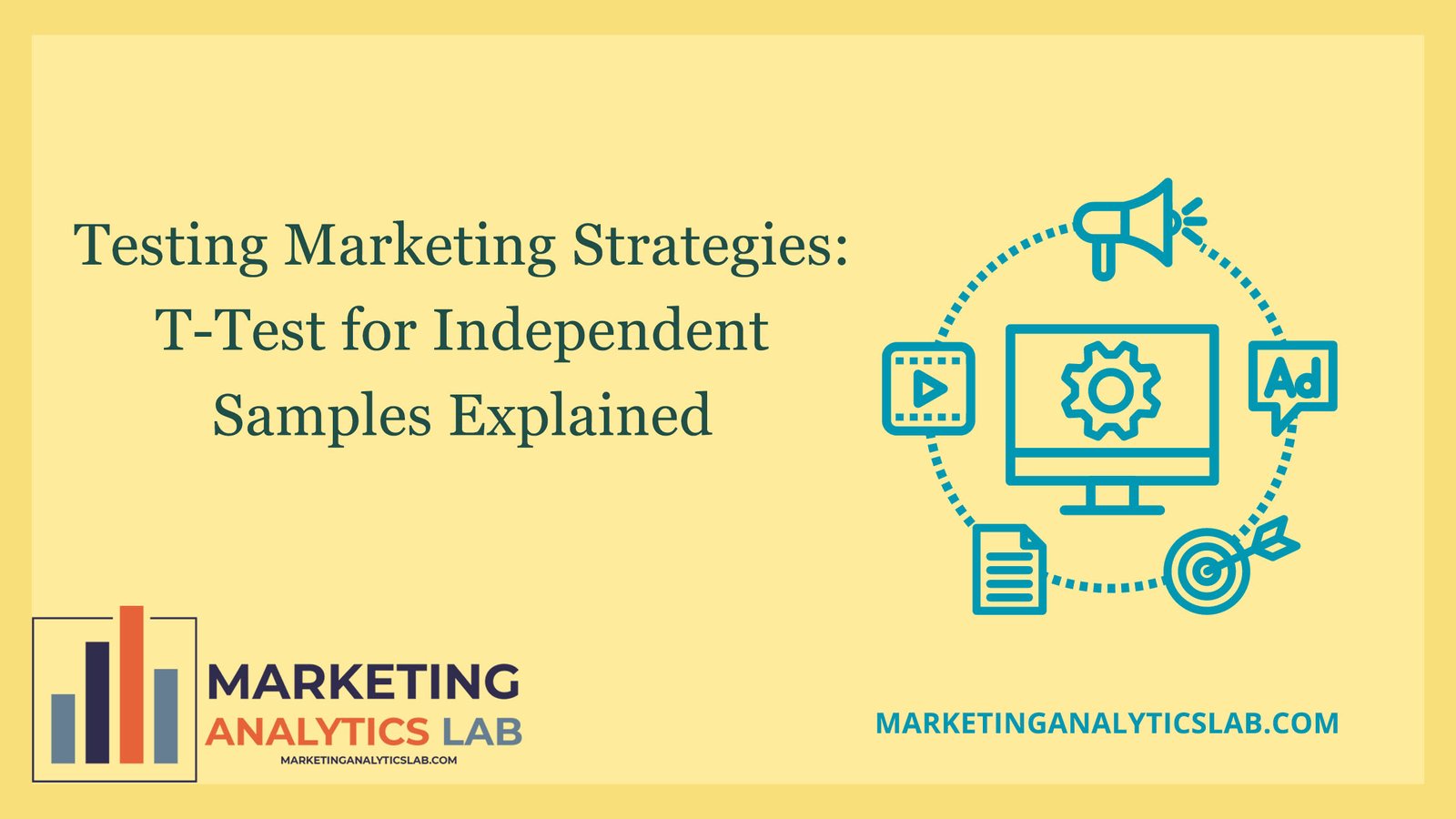Understanding the T-Test for Independent Samples
The t-test for independent samples is a statistical method used to compare the means of two independent groups to determine if there is a significant difference between them. In the context of marketing strategies, this test can be used to evaluate the effectiveness of different marketing approaches. The t-test calculates a t-statistic, which is then compared to a critical value to determine if the difference between the sample means is statistically significant. This test is commonly used in marketing research to make data-driven decisions and optimize marketing strategies.
The t-test for independent samples assumes that the data in each group is normally distributed and that the variances of the two groups are equal. If these assumptions are not met, alternative tests such as the Welch’s t-test can be used. The t-test is a parametric test, meaning it relies on certain assumptions about the data. It is important to ensure that these assumptions are met before interpreting the results of the t-test. Additionally, the sample size of each group should be sufficient to provide reliable results.
Interpreting the results of the t-test involves looking at the t-statistic and the p-value. The t-statistic indicates the size of the difference between the sample means, while the p-value tells us the likelihood of observing such a difference by chance. A low p-value (typically < 0.05) indicates that the difference between the groups is statistically significant. In the context of testing marketing strategies, a significant difference between the means of two groups could suggest that one marketing approach is more effective than the other. Overall, understanding the t-test for independent samples is crucial for making informed decisions based on marketing data.
Applying the T-Test to Test Marketing Strategies
In marketing, testing different strategies is essential to identify the most effective approach for reaching target audiences and achieving business goals. The t-test for independent samples can be a valuable tool for evaluating the success of marketing campaigns and informing future marketing decisions. For example, a company could use the t-test to compare the conversion rates of customers who received different promotional offers to determine which offer was more successful in driving sales.
To apply the t-test to test marketing strategies, marketers first need to define the variables they want to compare and collect data from each group. This could involve tracking metrics such as website traffic, click-through rates, or customer engagement levels. Once the data is collected, the t-test can be used to analyze the results and determine if there is a statistically significant difference between the groups. By using the t-test, marketers can make data-driven decisions about which marketing strategies to invest in and optimize their campaigns for better performance.
Overall, the t-test for independent samples is a powerful tool for evaluating marketing strategies and measuring the impact of different approaches on consumer behavior. By conducting rigorous statistical analysis using the t-test, marketers can gain valuable insights into the effectiveness of their campaigns and make informed decisions to drive business growth. Testing marketing strategies with the t-test can help companies stay competitive in an ever-evolving market and maximize the return on their marketing investments.

